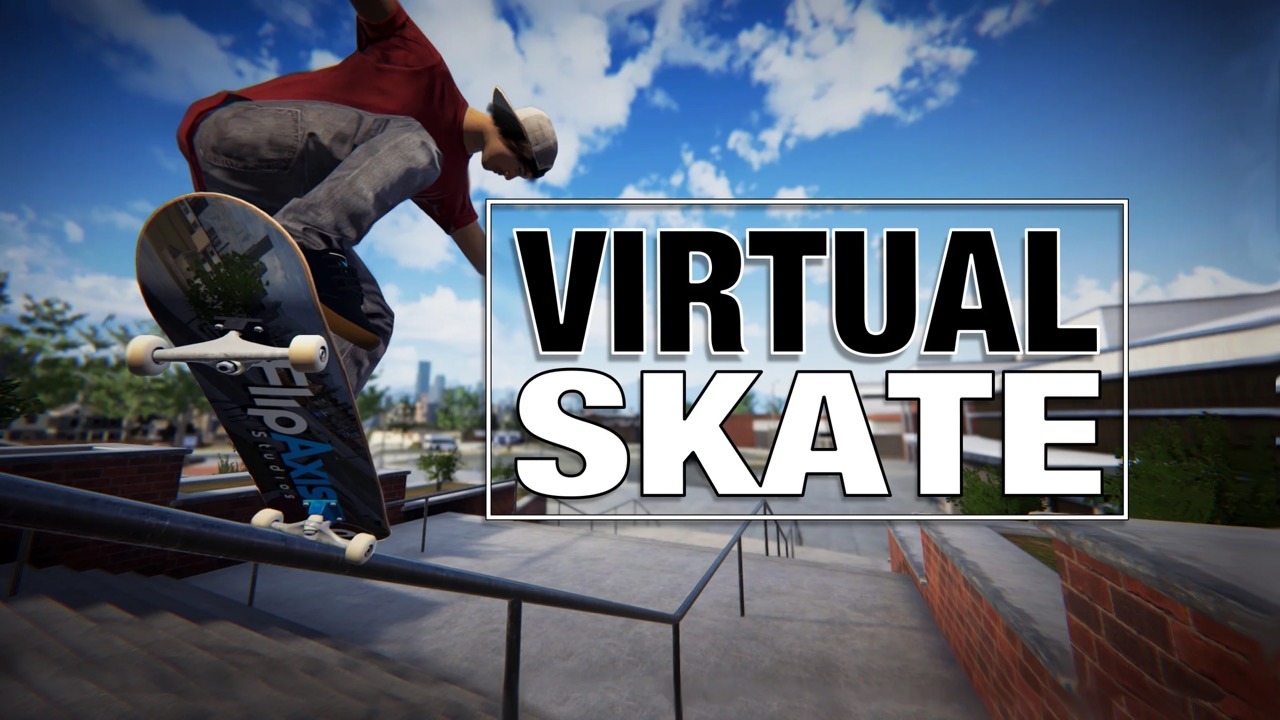Horror games have always been a major genre in VR gaming. The level of scares in VR horror games is indescribable, especially the jump scares that can terrify you to the core—crude but effective, and those who have experienced it would agree.
However, another genre of horror game has recently become popular, something that the viral hit horror game "The Exit 8" belongs to. The game doesn't rely on ghosts suddenly jumping out or showing any gross out gore. This new type of horror experience captures the experience of being in "liminal spaces." Just being in a "liminal space" should be enough to send chills down your spine, offering a completely different extreme horror experience compared to jump scares.
What exactly is a "liminal space"? Why does it both attract and scare us? And in which VR games can we experience it?
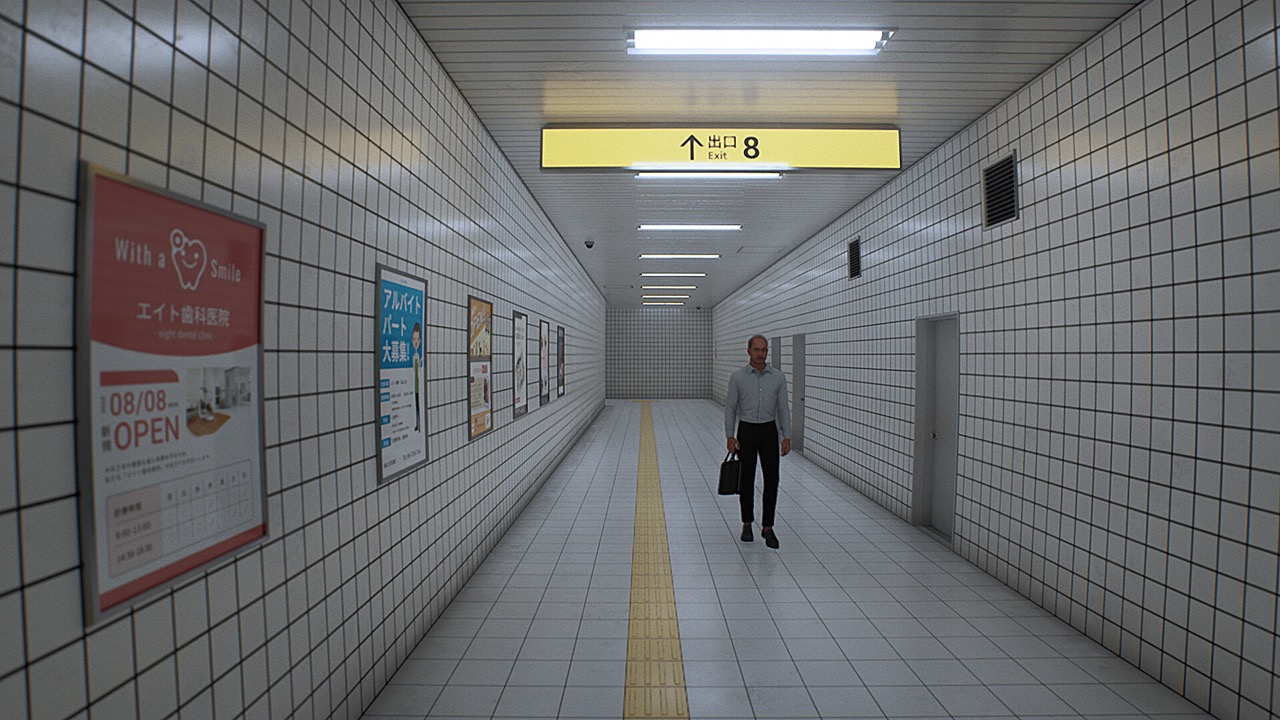 The viral hit horror game "The Exit 8" is a prime example of liminal space horror. (Source: KOTAKE CREATE)
The viral hit horror game "The Exit 8" is a prime example of liminal space horror. (Source: KOTAKE CREATE)
What is a Liminal Space?
Literally, the term "liminal" means "between two things," and when applied to spaces, it can be interpreted as "transitional spaces," which are places that exist between one state or function and another. Spaces like corridors and stairwells are transitional in function; abandoned schools or malls under renovation give a sense of being unformed, representing transitional states.
In films, scenes of these liminal spaces are often used. The classic psychological horror movie "The Shining" features endless corridors, which evoke a sense of psychological terror and highlights the duality of the conscious and unconscious: familiar yet strange, connecting but isolating at the same time. They are often used to trigger uncertainty or fear in the audience, sometimes even blending with dreams or surrealism to create a sense of disorientation beyond everyday reality.
 The oppressive corridors and silent twins are classic scenes from "The Shining." (Source: Warner Bros)
The oppressive corridors and silent twins are classic scenes from "The Shining." (Source: Warner Bros)
Liminal spaces share a great similarity with dreams, which themselves are transitional spaces between psychology and reality, characterized by uncertainty and surrealism. In dreams, we often encounter inexplicable or illogical scenes and situations, which can evoke deep-seated fears or confusion. Or perhaps, dreams themselves reflect the unease in our subconscious.
Similarly, liminal spaces trigger comparable emotional responses. The uncertainty and unfinished nature of these spaces make them feel both familiar and alien, thus generating an inexplicable fear, much like the elusive images and emotions in dreams.
4 Liminal Spaces in VR Games and Experiences
When we apply the concept of liminal spaces to virtual reality, the sense of "strangeness" is significantly magnified. Moreover, VR inherently possesses a quality of temporary detachment from reality. In a virtual world where boundaries are uncertain, we are confronted with the ultimate questions: "Who am I? Where am I? What am I doing?" The anxiety and fear generated by this confusion are the unique allure of "liminal spaces."
Below, I've gathered some notable VR "liminal space" experiences and games. Some you might have already played on PC, but experiencing them in VR is quite a different flavor.
1. The Backrooms:
The Backrooms is a classic representation of "liminal spaces," originating from a photo and a description posted on the 4Chan forum in 2019:
Gradually, The Backrooms gained popularity across various social media and communities, with users creating different levels, entities, and stories, turning The Backrooms into an endlessly expanding concept in reality.

The original image of The Backrooms from the 4Chan forum. (Source: 4Chan)
The Backrooms spread in popularity like a meme, with many creators developing related games and experiences. Now, if you want to experience The Backrooms in VR, the simplest way is to search for "Backrooms" in VRChat, where you'll find plenty of worlds to explore.
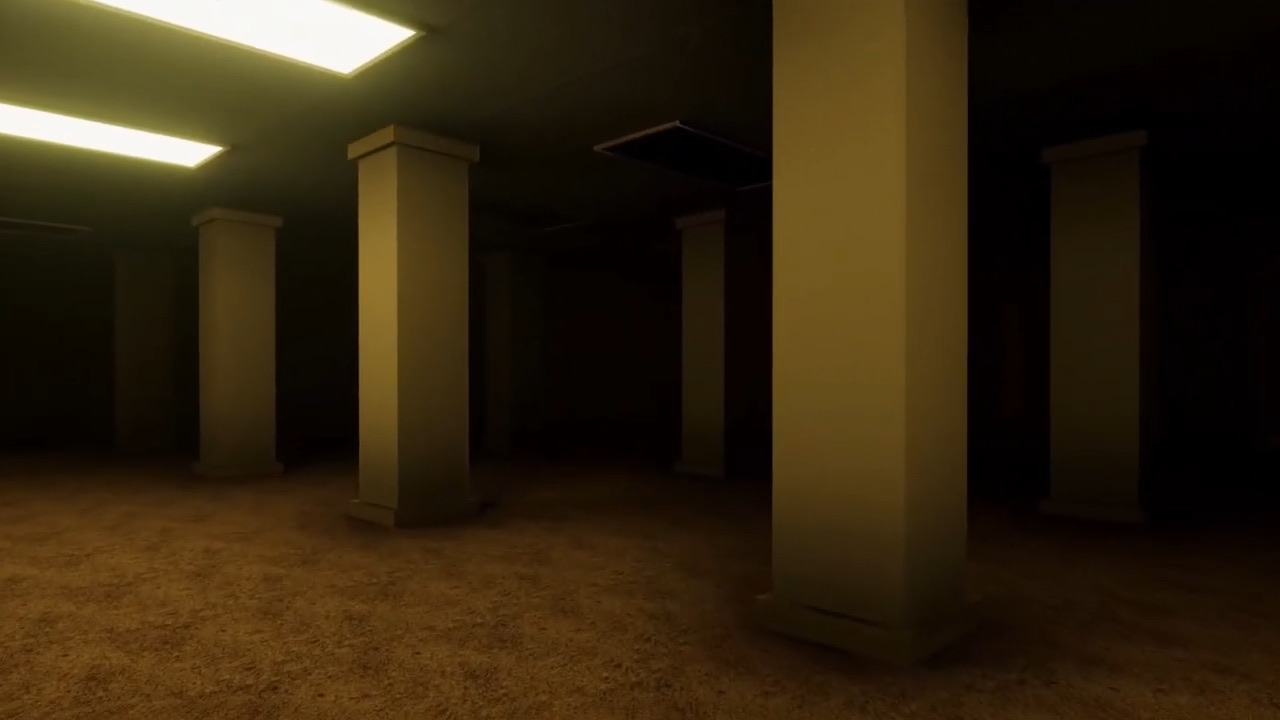 The Backrooms in VR, just looking at it sends shivers down the spine.
The Backrooms in VR, just looking at it sends shivers down the spine.
Among these, if you want to experience one of the earliest Backrooms in VRChat, you can visit "The Backrooms by Zayee". Many creators have since developed richer Backrooms, such as creator Friday1's "The Backrooms V10.3.0," which offers more levels and challenges. There are also many chill rooms themed around The Backrooms, simply letting you experience the eerie atmosphere without ghosts or challenges, but who can really relax in there?
2. Pools:
"The Pool Rooms" is actually one of the levels in The Backrooms. From the floors and walls to the ceilings, everything in this level is unnaturally white, and only the diffusely lit water in the pools is an uncomfortable vivid blue-green. However, despite being a pool, the surroundings are still connected by various bizarre corridors and staircases.
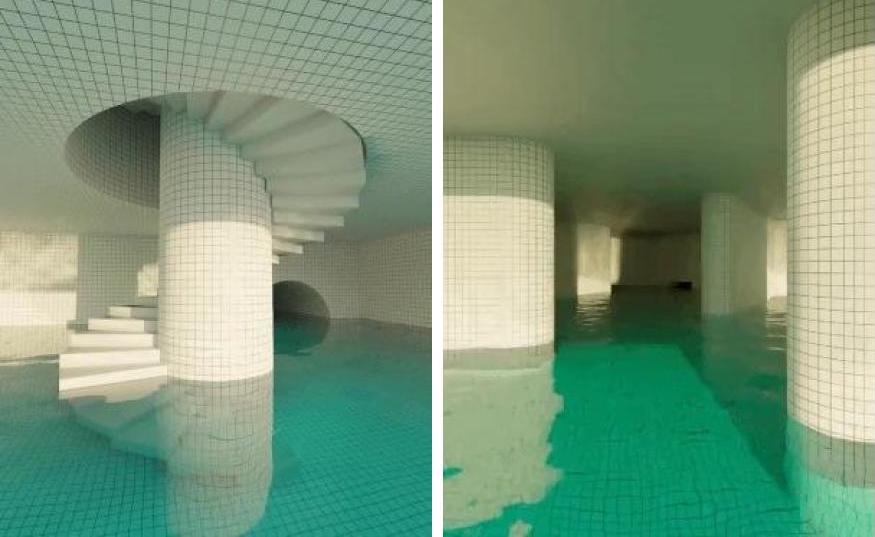 Concept art of The Backrooms level 37.
Concept art of The Backrooms level 37.
Creating a realistic pool room in VR might not be easy, as the "water" needs to be lifelike and the environmental sounds must be sufficient. Therefore, it's harder to find good recreations of this experience VRChat. However, on Steam, you can find a well-received title called "POOLS."
As the game description says: "The main thing in 'POOLS' is to look around and listen to the sounds. It's not about winning or losing. You could say the experience is like visiting a museum, just walking around and feeling the atmosphere. There are no monsters chasing you or jumping at you. There are few things to solve, almost just a few mazes. Sometimes the game challenges your navigation skills. But most of the time, you're just exploring." To me, this is a perfect representation of a "liminal space."
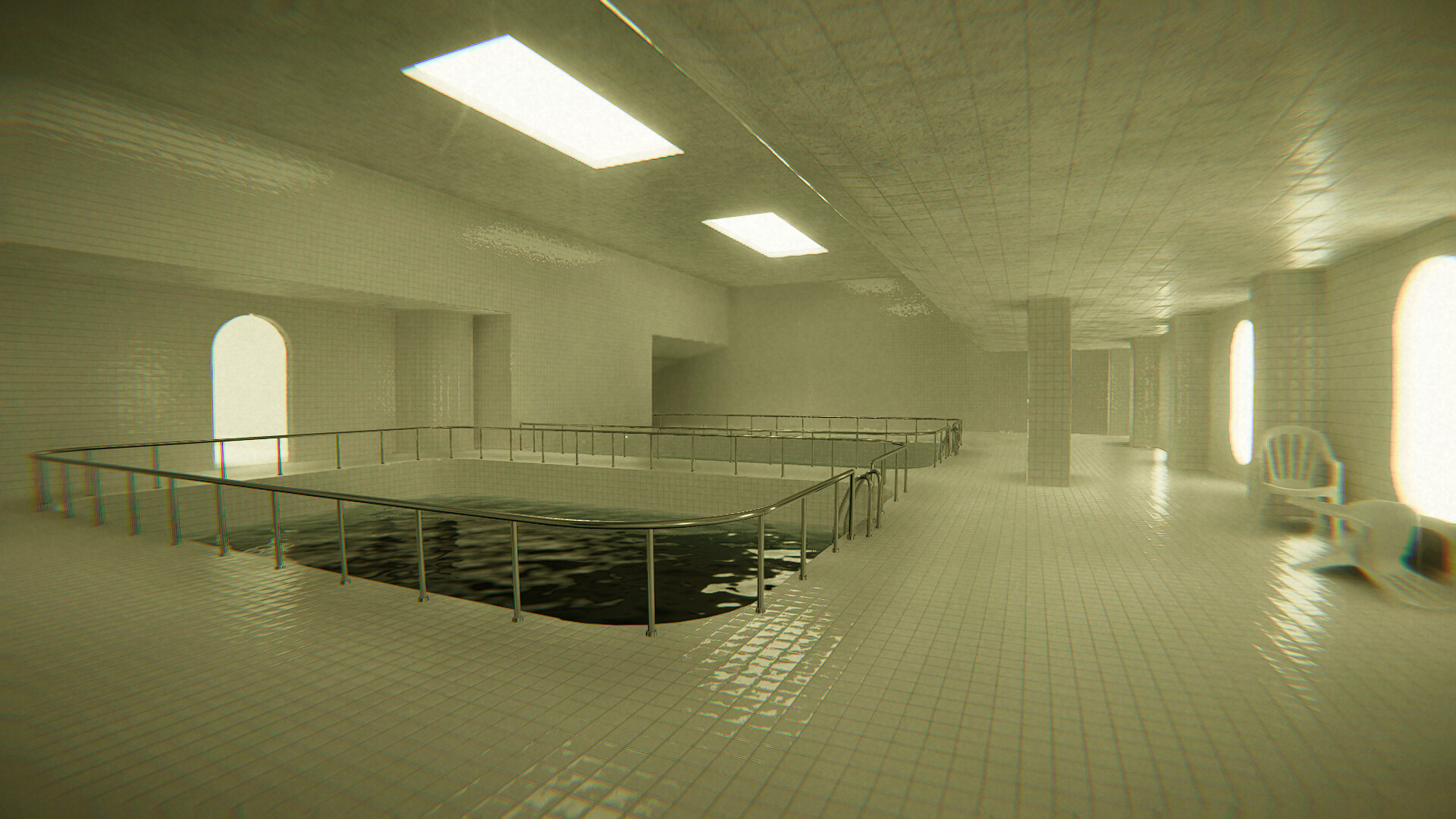 The environment in "POOLS." (Source: Tensori)
The environment in "POOLS." (Source: Tensori)
In addition to meeting the basic settings of a pool room, the pool is actually swimmable, and there are also interactive objects like slides and swim rings. When it was first released this year, the game only supported PC, but due to popular demand, the developers recently announced that they will release a VR version of "POOLS" this year, and they have put out a trailer that looks very promising.
3. The Exit 8:
"The Exit 8," developed by an independent Japanese developer, also perfectly embodies "liminal spaces." The gameplay design of endless looping conveys a sense of inescapability. The scene is set in an ordinary underground passageway, created using Unreal Engine 5, making the visuals extremely realistic.
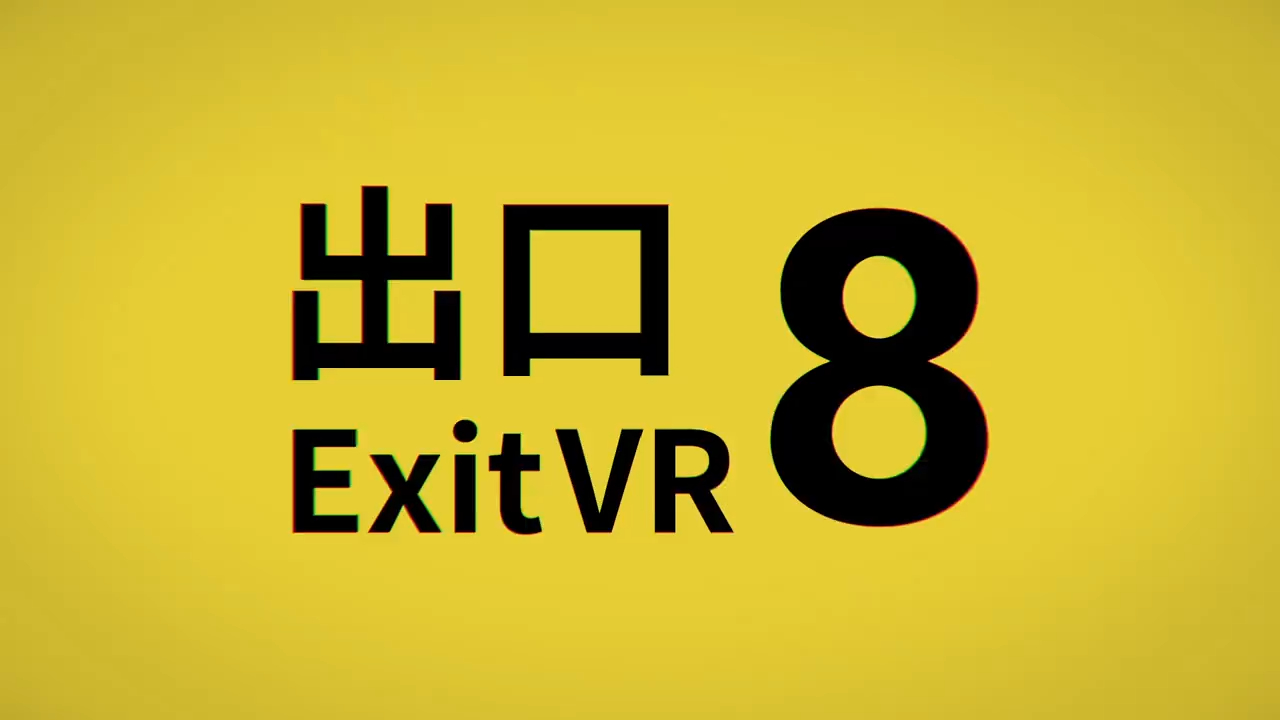 Trapped in the underground loop in the VR version of Exit No. 8. (Source: KOTAKE CREATE)
Trapped in the underground loop in the VR version of Exit No. 8. (Source: KOTAKE CREATE)
The player's goal is to leave the underground passageway through Exit No. 8. While walking through the corridors, players must be alert for any "anomalies." If an anomaly is detected, they must immediately turn back; if no anomalies are found, they can continue forward. Players need to make the right decisions consecutively, and only after making eight correct decisions can they successfully escape. As for what exactly the "anomalies" are, I won't spoil it here; please pay close attention to any subtle changes in the underground passageway.
 Is there anyone who has successfully escaped to give some hints to those still trapped in the underground passageway? (Source: KOTAKE CREATE)
Is there anyone who has successfully escaped to give some hints to those still trapped in the underground passageway? (Source: KOTAKE CREATE)
When "The Exit 8" was released in 2023, it immediately sparked heated discussions and sold over 30,000 copies on the day of its release, surprising even the developer. In September this year, in collaboration with the well-known VR game production company MyDearest, they released the VR version of "The Exit 8." The quality is great, and additional unique "anomalies" have been implemented to the VR version. Expect a play time for about an hour, and although it currently seems to have low replay value, for a VR game costing about $5, it's still an incredible value, not to mention the game might received an update in the future!
Another piece of good news is that MyDearest generously put "The Exit 8" on VRChat for everyone to try for free, and you can also have fun with friends. The gameplay is generally the same as the original version, just with less rich elements and no randomness.
4. Liminal Phase:
Next, I'd like to introduce a VR horror game called "Liminal Phase," which is quite different from the above experience modes. As its name suggests, it can be said to be a puzzle game rich in "liminal" atmosphere, conceptually somewhat similar to "TRON." I wonder if the developers were paying homage?
The game is set in the nostalgic yet slightly off 90s. Players take on the first-person perspective of the protagonist, Frank, who lives in a closed and dark house, with the most conspicuous object being a bright computer on the desk. One day, Frank receives a mysterious 3.5” floppy game disk called "Sanctum 3-D" and is literally transported into this strange game world. Players, as Frank, must navigate through the "game within the game," as if lost in a psychological maze created by the protagonist, and experience the blurring reality and illusion and then face uncertainties to defeat psychological inner demons.
It's a bit difficult to describe the plot progression of "Liminal Phase" through words. Just constantly traversing between different spaces in the game feels quite like playing The Backrooms, except this time, you fall into a pixel-style game world within a game. The use of pixel style and high-contrast colors further enhances the sense of alienation. Another commendable aspect is the game's sound design, which immersively enhances the oppressive atmosphere without being too overpowering.
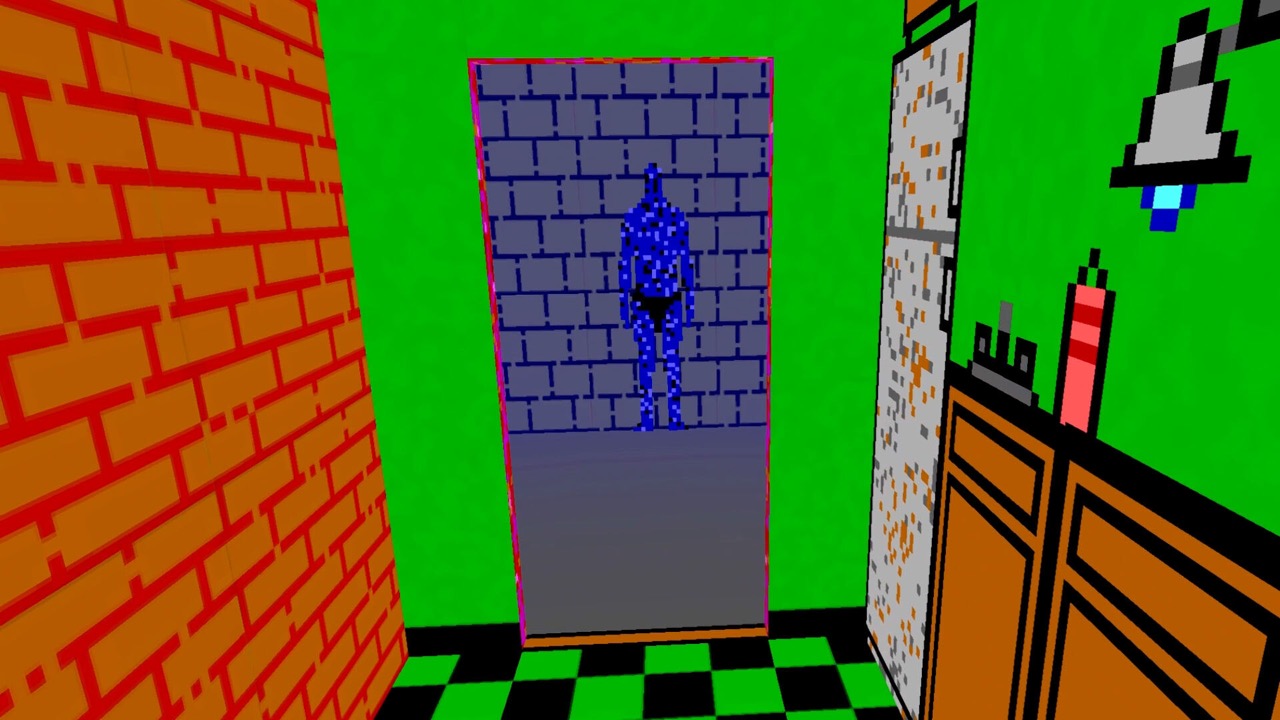 Who am I? Where am I? (Source: anananas studio)
Who am I? Where am I? (Source: anananas studio)
"Liminal Phase" is available on VIVEPORT and Steam. Although the game isn't very long, it will linger in your mind after playing, and it’s definitely worthwhile.
Do you know of any other games that deal with the concept of liminal spaces that we may have missed here? Feel free to share with us!
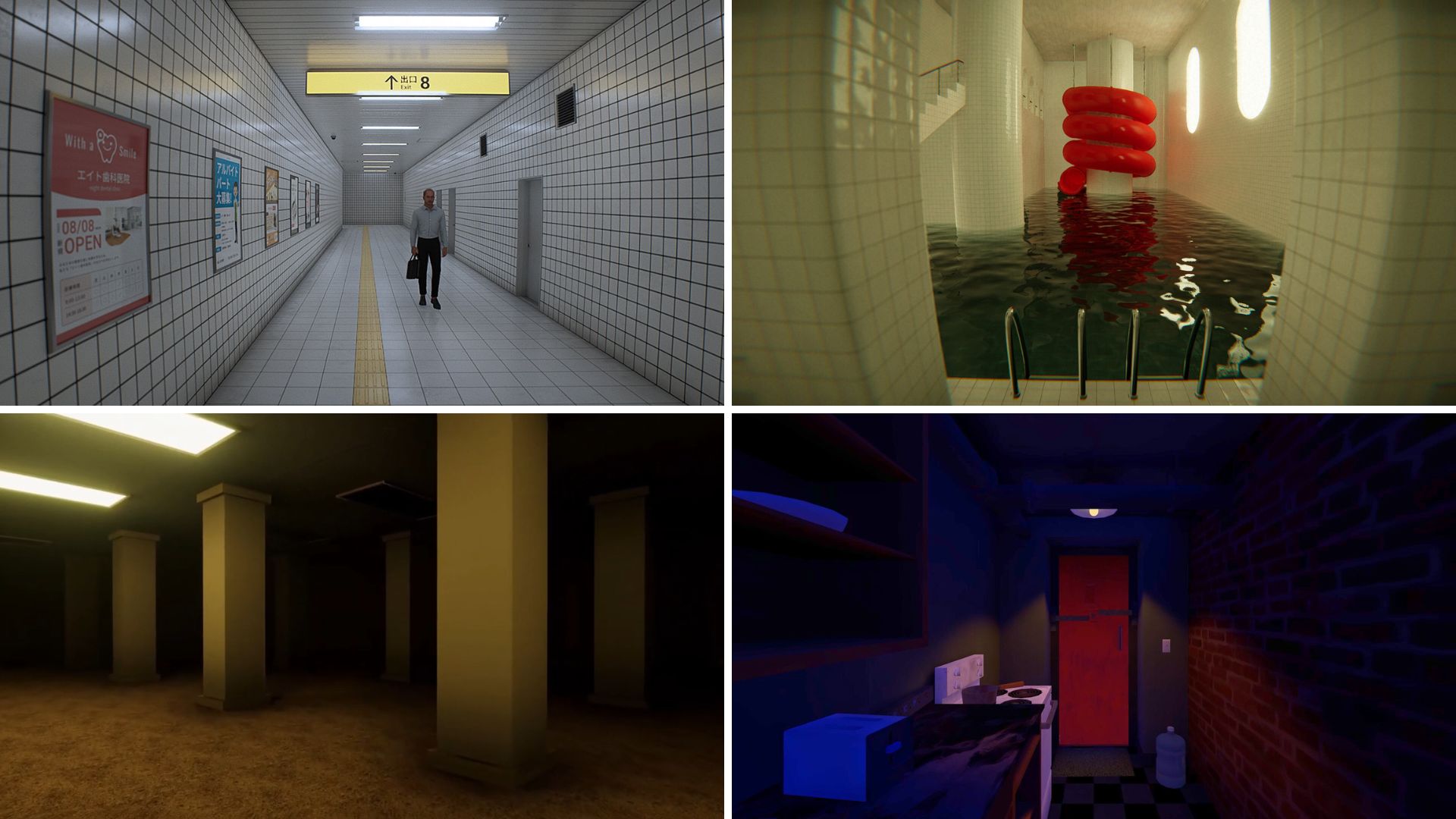
 The viral hit horror game "The Exit 8" is a prime example of liminal space horror. (Source: KOTAKE CREATE)
The viral hit horror game "The Exit 8" is a prime example of liminal space horror. (Source: KOTAKE CREATE) The oppressive corridors and silent twins are classic scenes from "The Shining." (Source: Warner Bros)
The oppressive corridors and silent twins are classic scenes from "The Shining." (Source: Warner Bros)
 The Backrooms in VR, just looking at it sends shivers down the spine.
The Backrooms in VR, just looking at it sends shivers down the spine. Concept art of The Backrooms level 37.
Concept art of The Backrooms level 37. The environment in "POOLS." (Source: Tensori)
The environment in "POOLS." (Source: Tensori) Trapped in the underground loop in the VR version of Exit No. 8. (Source: KOTAKE CREATE)
Trapped in the underground loop in the VR version of Exit No. 8. (Source: KOTAKE CREATE) Is there anyone who has successfully escaped to give some hints to those still trapped in the underground passageway? (Source: KOTAKE CREATE)
Is there anyone who has successfully escaped to give some hints to those still trapped in the underground passageway? (Source: KOTAKE CREATE) Who am I? Where am I? (Source: anananas studio)
Who am I? Where am I? (Source: anananas studio)